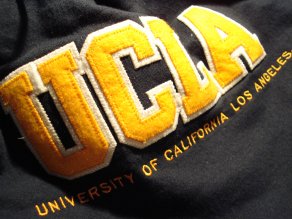 Wednesday June 1st was my last day of Spring Quarter teaching at UCLA. At 9:50am, a BruinAlert trickled into my inbox announcing “Police Activity at Engineering Building 4. Avoid area until further notice” and a few minutes later “Shooting at Engineering 4. Go to secure location and deny entry (lockdown) now!” I did not notice, as I was busy preparing for my review lecture at 11:30am; I also did not see the flood of e-mails from students starting at 10am saying: “I just heard there’s a shooter loose on campus and I’m staying home”. At 10:15am, NBC interrupted its regular programming to announce that a shooting event was reported in progress at UCLA; the news helicopter was already on the way.
Wednesday June 1st was my last day of Spring Quarter teaching at UCLA. At 9:50am, a BruinAlert trickled into my inbox announcing “Police Activity at Engineering Building 4. Avoid area until further notice” and a few minutes later “Shooting at Engineering 4. Go to secure location and deny entry (lockdown) now!” I did not notice, as I was busy preparing for my review lecture at 11:30am; I also did not see the flood of e-mails from students starting at 10am saying: “I just heard there’s a shooter loose on campus and I’m staying home”. At 10:15am, NBC interrupted its regular programming to announce that a shooting event was reported in progress at UCLA; the news helicopter was already on the way.
The narrative of the school shooter is by now so familiar that it was enacted without question by the police, the whole campus, and the media. It was the last week of instruction, and many classes had finals. Some of my colleagues were handing out exams when the alarm went, and they had to improvise barriers to their classrooms. The social media rumor mills were intense: there were four shooters in black, one of the gunmen was in the dorms, on the other side of campus; other gunmen had tried to force entry into a classroom. At 12:17, the police issued the all-clear; there was in fact no shooter event, but a murder-suicide. A little before 10am, two people with gunshot wounds had been found dead in Boelter Hall; a former graduate student had murdered his former professor.
In the week following the tragic incident, we scrambled to reschedule exams and make allowances for traumatized students, who had been led to believe their lives were in danger. Around 40,000 students were affected; the massive police show of force accomplished in effect nothing, and the intense media coverage distilled down to a “UCLA murder-suicide”. The police response could be justified from a precautionary perspective, yet at the same time the event illustrates how the pattern of school shootings have now become the default interpretive frame, imposed at great cost to the community even when entirely inappropriate.
In attributing blame for the inadequate response of the police to the July 22nd shootings, we might want to bear in mind that the police must necessarily respond to a new event using familiar frames. At Utøya, the police failed to realize the vital importance of immediate intervention to save lives; at UCLA, the police were confronted with a regular murder and applied the logic of a school shooter event, needlessly traumatizing thousands of students.
Both miss the actual target, like the Norwegian fairytale’s “Good day, man! Axe handle!”: a response that simply does not fit the event. We need skilled police to attend to signs of a particular narrative or event structure, and to be trained to respond accordingly. Constructive criticism will need to take the narrative structure of crime into consideration – all the more given the fact that mass shootings are often explicitly staged as media events, a topic we will return to in our next newsletter.
- This text is written as a Research Reflection in the NECORE project’s recent newsletter.